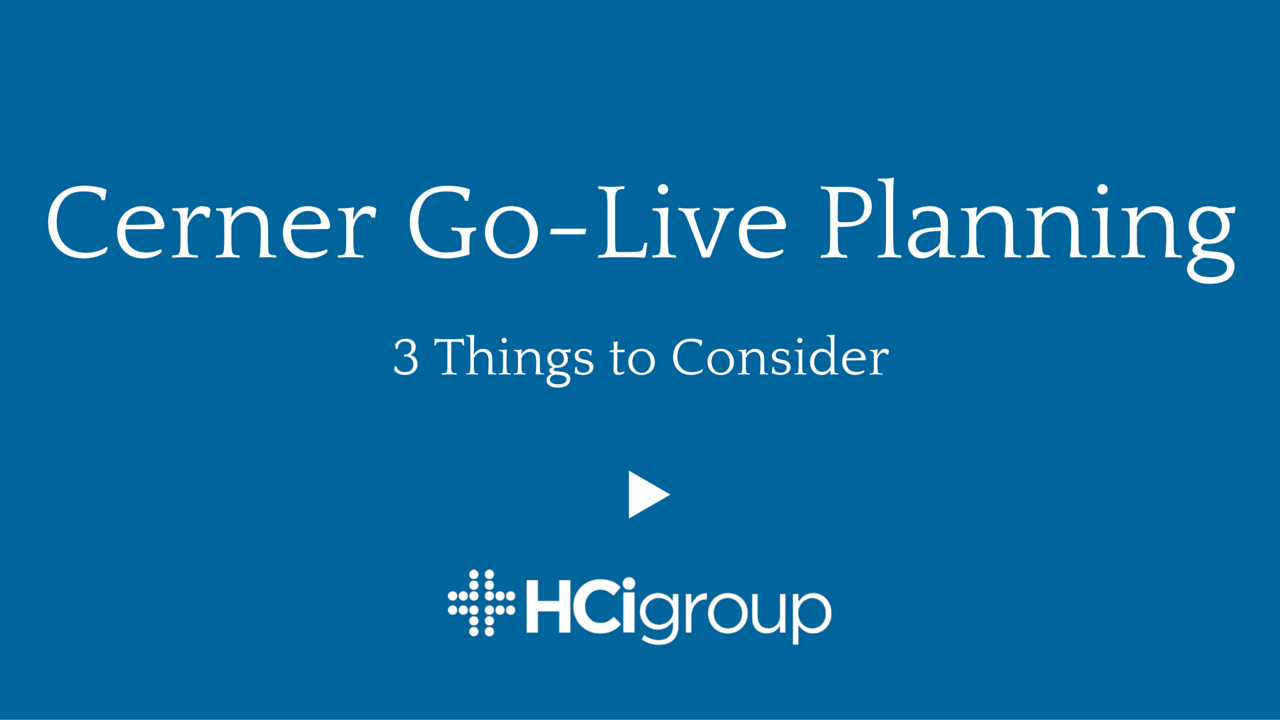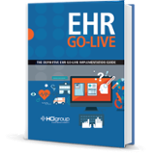Cerner Go-Live Planning: 3 Things to Consider (Video)

Michael Sinno identifies 3 key elements that make a Cerner Go-Live a success.
Transcript:
When you’re planning for or executing a Cerner go-live, there are 3 key elements that make it a success.
1. Technical Readiness
Make sure that, whether you're remotely hosted by Cerner or you have your hardware on-premise, everything is ready to go. I’m talking about not only the back end, but also on the front end CITRIX side, from the barcode scanning that’s out on the desktops, to network utilization and bandwidth from your ambulatory and your most remote sites. Make sure that the experience that your physicians and your clinicians are going to have is going to be one that lends itself to adoption. In other words, you don’t want to have put in all that work for an 18 or 24 month period and then it’s reduced down to “Cerner is slow.” So those are the technical components.
2. Effective Cerner Training Program
 Another element is an effective Cerner training program—making sure that the workforce is able to adopt in the shortest amount of time possible and get back to a level of pre-EMR productivity as quickly as possible. It’s not just about the classroom training, but also the reinforcement of it with at-the-elbow resources and filling in the super user program. Make sure that the super user program is sustained and make sure that your service desk and your clinical service desk (if you haven’t invested in one that’s something that I strongly recommend) is equipped to be able to answer questions quickly. Post go-live questions don’t stop. Whether they are “how to’s” or the comment that “there’s got to be a more efficient way of doing something,” they want to be able to speak to resources that can help right then and there, or at least take their information so that they’re not going back and forth trying to gather that information.
Another element is an effective Cerner training program—making sure that the workforce is able to adopt in the shortest amount of time possible and get back to a level of pre-EMR productivity as quickly as possible. It’s not just about the classroom training, but also the reinforcement of it with at-the-elbow resources and filling in the super user program. Make sure that the super user program is sustained and make sure that your service desk and your clinical service desk (if you haven’t invested in one that’s something that I strongly recommend) is equipped to be able to answer questions quickly. Post go-live questions don’t stop. Whether they are “how to’s” or the comment that “there’s got to be a more efficient way of doing something,” they want to be able to speak to resources that can help right then and there, or at least take their information so that they’re not going back and forth trying to gather that information.
3. Cerner Post Go-Live Support Model
The last part of it, I would say in a successful go-live, is a successful support model post go-live. A lot of energy is put into getting through the milestone of the big bang or the go-live, a lot of resources are put together into a command center, with the mobilizing of a workforce for at-the-elbow resources. Then, when we get to a certain point, it all dissipates and is transferred over to operational support. Make sure that your support model is adequately equipped to be able to answer questions and to remediate issues at the least cost possible. Again, the way to go about doing that is not just the implementation of a clinical service desk or an application service desk that’s knowledgeable in the Cerner EMR, but it’s also having a support model that goes out and proactively looks for issues or questions before they come into the service desk. A way of doing that would be a rotated basis where you take your tier two analysts and they go out to the floor on a scheduled basis. They go out to the ambulatory clinics—that schedule is published—and the clinicians and the support staff know that resource is coming and know that they’re going to be helpful. So, they may hold off on the “how to” type of questions, thereby relieving that burden from the service desk, knowing that Mike Sinno is coming out and Mike is skilled in Cerner, so he’s going to be able to answer my question.
You may also be interested in:
- Go-Live "Best" Practices to Avoid
- Beyond the Clinical Service Desk: Sustaining Your EHR in Austerity
- Cerner Go-Live Support
- eBook: The Definitive EHR Go-Live Guide

